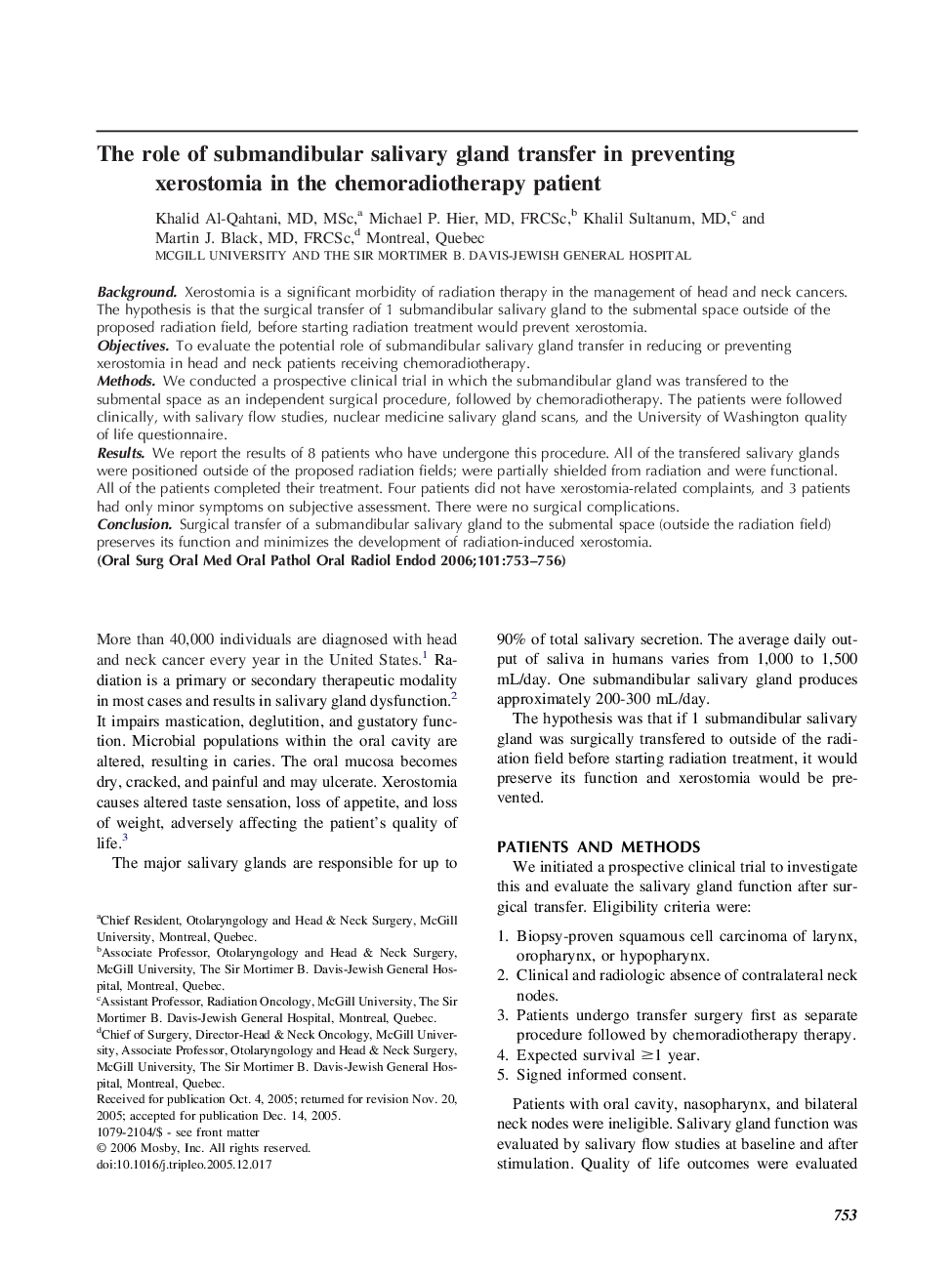| Article ID | Journal | Published Year | Pages | File Type |
|---|---|---|---|---|
| 3169965 | Oral Surgery, Oral Medicine, Oral Pathology, Oral Radiology, and Endodontology | 2006 | 4 Pages |
BackgroundXerostomia is a significant morbidity of radiation therapy in the management of head and neck cancers. The hypothesis is that the surgical transfer of 1 submandibular salivary gland to the submental space outside of the proposed radiation field, before starting radiation treatment would prevent xerostomia.ObjectivesTo evaluate the potential role of submandibular salivary gland transfer in reducing or preventing xerostomia in head and neck patients receiving chemoradiotherapy.MethodsWe conducted a prospective clinical trial in which the submandibular gland was transfered to the submental space as an independent surgical procedure, followed by chemoradiotherapy. The patients were followed clinically, with salivary flow studies, nuclear medicine salivary gland scans, and the University of Washington quality of life questionnaire.ResultsWe report the results of 8 patients who have undergone this procedure. All of the transfered salivary glands were positioned outside of the proposed radiation fields; were partially shielded from radiation and were functional. All of the patients completed their treatment. Four patients did not have xerostomia-related complaints, and 3 patients had only minor symptoms on subjective assessment. There were no surgical complications.ConclusionSurgical transfer of a submandibular salivary gland to the submental space (outside the radiation field) preserves its function and minimizes the development of radiation-induced xerostomia.
